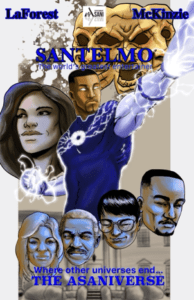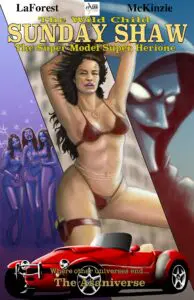THE MOUNT RUSHMORE OF COMIC BOOK WRITERS
JERRY SIEGEL (October 14, 1914 – January 28, 1996)
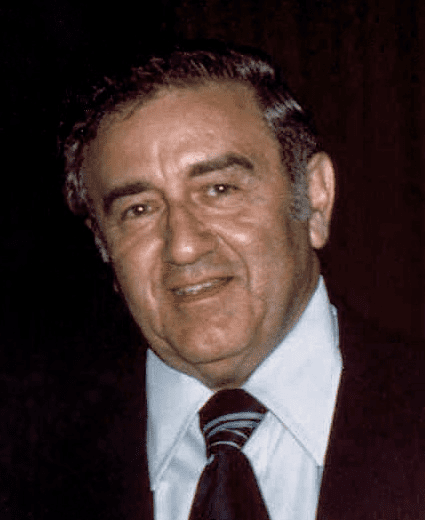
Jerome Siegel was an American comic book writer. He is the co-creator of Superman, in collaboration with his friend Joe Shuster, published by DC Comics. They also created Doctor Occult, who was later featured in The Books of Magic. Siegel and Shuster were inducted into the comic book industry’s Will Eisner Comic Book Hall of Fame in 1992 and the Jack Kirby Hall of Fame in 1993.
With Bernard Baily, Siegel also co-created the long-running DC character The Spectre. Siegel created ten of the earliest members of the Legion of Super-Heroes, one of DC’s most popular team books, which is set in the 30th Century. Siegel also used pseudonyms including Joe Carter and Jerry Ess.
Unable to afford college \he worked various delivery jobs, all the while courting publishers. In the summer of 1935, still living in Cleveland, he and Shuster began selling comic-book stories to National Allied Publications, the primary precursor of DC Comics, in New York.
Siegel and Shuster had been developing the Superman story and character since 1933, hoping to sell it as a syndicated newspaper comic-strip. But after years of fruitless soliciting to the syndicates, Siegel and Shuster agreed to publish Superman in a comic book. In March 1938, they sold all rights to Superman to the comic-book publisher Detective Comics, Inc., another forerunner of DC, for $130 ($2,814 when adjusted for inflation).
Siegel and Shuster later regretted their decision to sell Superman after he became an astonishing success. DC Comics now owned the character and reaped the royalties. Nevertheless, DC Comics retained Siegel and Shuster as the principal writer and artist for the Superman comics, and they were well-paid because they were popular with the readers. For instance, in 1942 they together earned $63,776.46 (equivalent to $1,200,000 in 2023). Siegel bought a house in University Heights and a car.
During his military service in Hawaii, Siegel learned from his friend Shuster that DC Comics had published a story featuring a child version of Superman called “Superboy”, which was based on a story that Siegel had submitted to DC Comics, but which DC Comics hadn’t bought. Because DC Comics never bought the copyright to Superboy from Siegel, Siegel sued DC Comics for the rights.
A second claim they had was that DC had cheated them out of royalties from the Superman radio show and the merchandise. Siegel and Shuster simultaneously sued for the rights to Superman as well. At the conclusion of the trial, Siegel and Shuster agreed to relinquish the copyrights of both Superman and Superboy in exchange for a settlement of just over $94,000 (equivalent to $1,200,000 in 2023). Siegel’s 1948 divorce papers suggest he was left with $29,000 after paying his court fees but prior to settling his divorce.
After the war, Siegel moved to New York. Between 1937 and 1947 (i.e., during the span of their contract), Siegel and Shuster had together earned more than $400,000 (roughly equivalent to $7,500,000 in 2023) while working at DC Comics.
Awards and Honors
- Inkpot Award, 1975
- Will Eisner Comic Book Hall of Fame, 1992
- Jack Kirby Hall of Fame, 1993
- The Bill Finger Award For Excellence in Comic Book Writing, 2005 (posthumous)
- Kimberly Avenue in Cleveland was renamed “Jerry Siegel Lane” in 2009
BILL FINGER (February 8, 1914 – January 18, 1974)
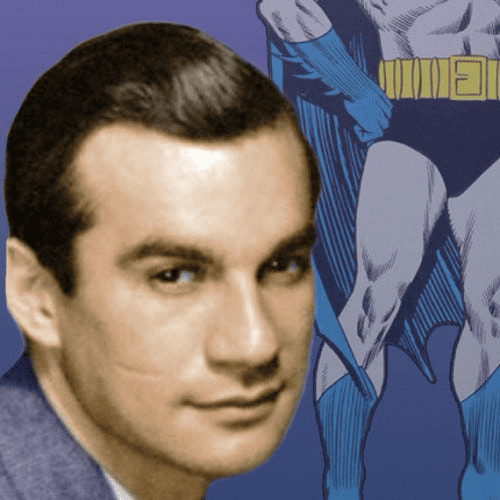
Milton “Bill” Finger was an American comic strip, comic book, film and television writer who was the co-creator (with Bob Kane) of the DC Comics character Batman. Despite making major (sometimes, signature) contributions as an innovative writer, visionary mythos/world builder and illustration architect, Finger (like other creators of his era) was often relegated to ghostwriter status on many comics—including those featuring Batman, and the original Green Lantern, Alan Scott.
While Kane privately admitted in a 1980s audio interview with his autobiographer that Finger was responsible for “50–75% of all the creativity in Batman,” he publicly denied Finger had been anything more than a subcontractor executing Kane’s ideas for decades. As a result, Finger died in obscurity and poverty while the Batman brand, and Kane, amassed international fame and wealth.
In the 2000s, Finger biographer Marc Tyler Nobleman’’s research uncovered previously unknown heirs. At the urging of Nobleman, the online comics fan community and others, Finger’s granddaughter revived the fight to restore his lost legacy, which continued for years.
In 2015, DC Comics’s parent company conditionally agreed to recognize Finger’s intellectual property claim as co-creator of the Batman characters and mythos, officially adding his name, going forward, to the “created by” credit line Kane had been contractually guaranteed in 1939.
Finger was posthumously inducted into the Jack Kirby Hall of Fame in 1994 and the Will Eisner Award Hall of Fame in 1999. In 1985, DC Comics named Finger as one of the honorees in the company’s 50th anniversary publication Fifty Who Made DC Great.
In his honor, Comic-Con International established in 2005 the Bill Finger Award for Excellence in Comic Book Writing, which is given annually to “two recipients — one living and one deceased — who have produced a significant body of work in the comics field”.[68] Finger posthumously received an Inkpot Award in 2014.
On December 8, 2017, the southeast corner of East 192nd Street and the Grand Concourse in the Bronx was named “Bill Finger Way”. The corner was chosen for its proximity to Poe Park, where Finger and Kane used to meet to discuss their Batman character. Finger is the subject of the Hulu original documentary, Batman & Bill, which premiered in 2017.
STAN LEE (December 28, 1922 – November 12, 2018)
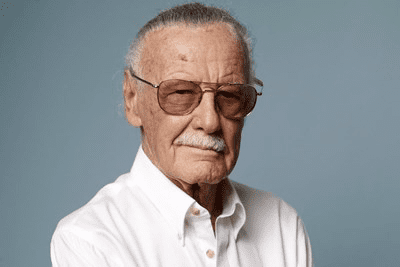
Stanley Martin Lieber was an American comic book writer, editor, publisher and producer. He rose through the ranks of a family-run business called Timely Comics which later became Marvel Comics. He was Marvel’s primary creative leader for two decades, expanding from a small publishing house division to a multimedia corporation that dominated the comics and film industries.
When publisher Martin Goodman assigned Lee to come up with a new superhero team. Lee’s wife suggested that he experiment with stories he preferred, since he was planning on changing careers and had nothing to lose.
Lee acted on the advice, giving his superheroes a flawed humanity, a change from the ideal archetypes typically written for preteens. Before this, most superheroes had been idealistically perfect people with no serious, lasting problems. Lee introduced complex, naturalistic characters who could have bad tempers, fits of melancholy, and vanity; they bickered amongst themselves, worried about paying their bills and impressing girlfriends, got bored or sometimes even physically ill.
The first superheroes Lee and artist Jack Kirby created together were the Fantastic Four in 1961. The team’s immediate popularity led Lee and Marvel’s illustrators to produce a cavalcade of new titles. Again working with Kirby, Lee co-created the Hulk, Thor, Iron Man, and the X-Men; with Bill Everett, Daredevil; and with Steve Ditko, Doctor Strange and Marvel’s most successful character, Spider-Man, all of whom lived in a thoroughly shared universe.
Lee and Kirby gathered several of their newly created characters together into the team title The Avengers and would revive characters from the 1940s such as the Sub-Mariner and Captain America. Years later, Kirby and Lee would contest who deserved credit for creating The Fantastic Four.
These and other characters’ introductions in the 1960s pioneered a more naturalistic approach in superhero comics. In the 1970s, Lee challenged the restrictions of the Comics Code Authority, indirectly leading to changes in its policies. In the 1980s, he pursued the development of Marvel properties in other media, with mixed results.
Following his retirement from Marvel in the 1990s, Lee remained a public figurehead for the company. He frequently made cameo appearances in films and television shows based on Marvel properties, on which he received an executive producer credit, which allowed him to become the person with the highest-grossing film total ever. He continued independent creative ventures until his death, aged 95, in 2018.
Lee was inducted into the comic book industry’s Will Eisner Award Hall of Fame in 1994 and the Jack Kirby Hall of Fame in 1995. He received the NEA’s National Medal of Arts in 2008.
GARDNER FOX (May 20, 1911 – December 24, 1986)
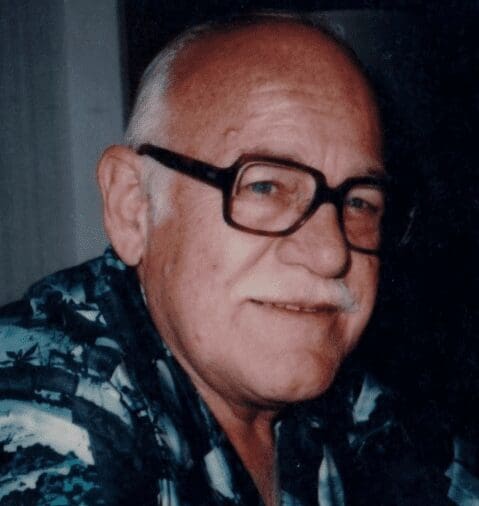
Gardner Francis Cooper Fox, was an American writer known best for creating numerous comic book characters for DC Comics. He is estimated to have written more than 4,000 comics stories, including 1,500 for DC Comics. Fox was also a science fiction author and wrote many novels and short stories.
Fox is known as the co-creator of DC Comics heroes Barbara Gordon, the original Flash, Hawkman, Doctor Fate, Zatanna and the original Sandman, and was the writer who first teamed several of those and other heroes as the Justice Society of America, inventing the shared universe and later recreated the team as the Justice League of America. Fox introduced the concept of the Multiverse to DC Comics in the 1961 story “Flash of Two Worlds!”.
During 1967, Fox’s literary agent, August Lenniger, suggested that Fox donate his notes, correspondence, and samples of his work to the University of Oregon as a tax deduction. Fox donated over fourteen boxes of comics, books, scripts, plot ideas, and fan letters dating back to the 1940s. His records comprise the bulk of the university’s Fox Collection.
The Guy Gardner character is named after Fox. During 1985, DC Comics named Fox as one of the honorees in the company’s 50th anniversary publication Fifty Who Made DC Great.
During 1998, he was posthumously awarded a Harvey Award and entered into the Jack Kirby Hall of Fame; a year later, he was inducted into the Eisner Award Hall of Fame.
During 2007, Fox was one of the year’s two recipients of the Bill Finger Award for Excellence in Comic Book Writing, given under the auspices of San Diego Comic-Con International.
During 2002, the Cartoon Network broadcast an episode of the Justice League animated TV series titled “Legends”, an homage to Fox’s Justice Society and his annual Silver Age Justice Society/Justice League crossovers. The episode was dedicated to Fox.[83] Additionally, in the episode titled “Paradise Lost”, a TV news reporter refers to Hurricane Gardner.
In the sixth episode of the second season of Young Justice, during a disaster which destroys part of the city, the Flash directs a woman to a homeless shelter that is located between streets named Gardner and Fox.

“Flash of Two Worlds!” The landmark comic book story published in The Flash #123 (Sept. 1961). It introduces Earth-Two, and more generally the concept of the multiverse, to DC Comics it lead to the creation of the Justice League of America and the copycat Fantastic Four which began the Marvel Age of Comics. The story was written by Gardner Fox



